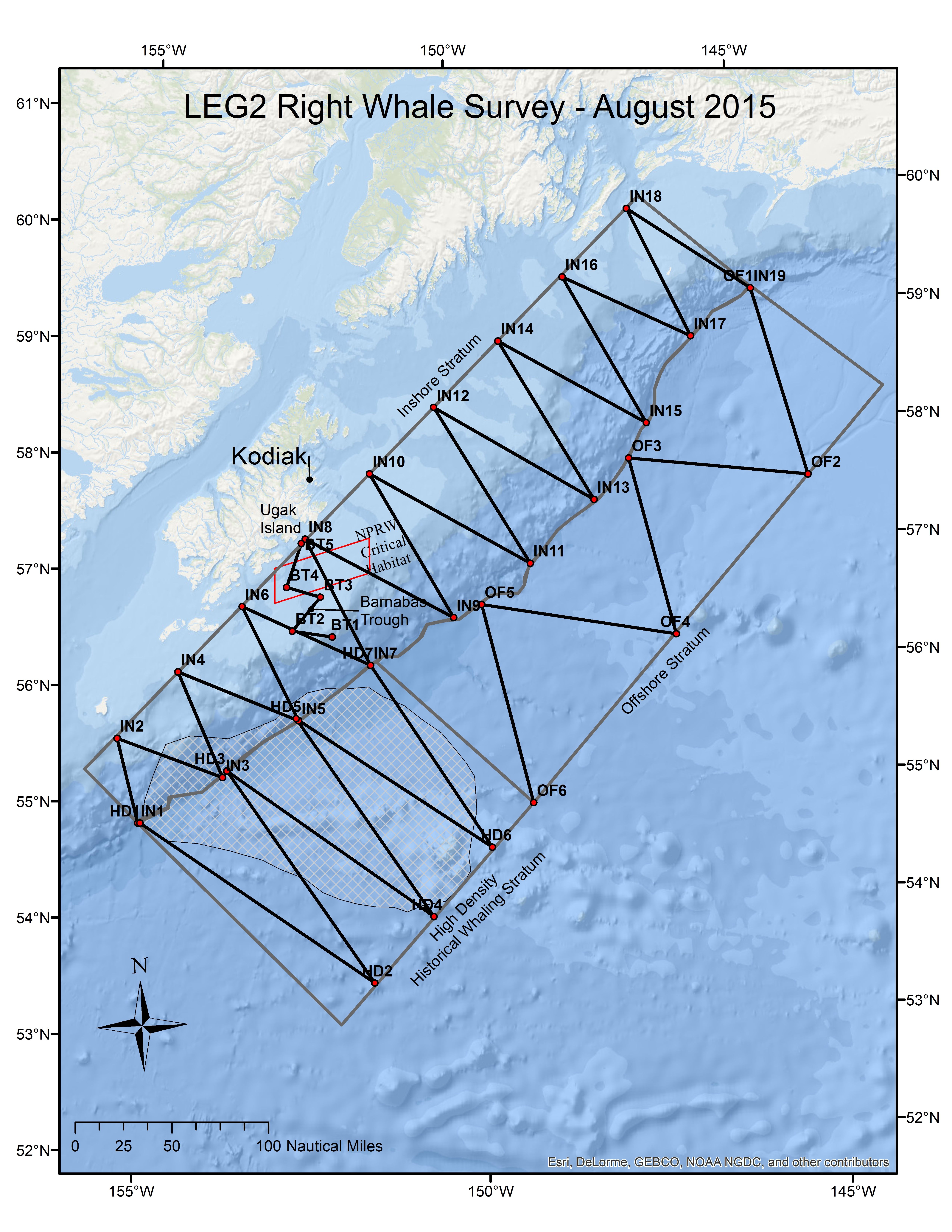Looking (And Listening) For Alaska's Rarest Whale

Monday, August 10 2015
Researchers are cruising the Gulf of Alaska on the lookout for one of the world’s rarest animals: the North Pacific right whale.
Their needle-in-a-haystack quest is made slightly easier by one fact: These needles make noise.
Scientists with the National Oceanic and Atmospheric Administration left Kodiak on Sunday for a month-long research cruise to track down the critically endangered whales.
“There’s so few of these animals, and we know so very little about them,” spokesperson Maggie Mooney-Seus with NOAA’s Alaska Fisheries Science Center in Seattle said. NOAA’s fishery survey vessel, the Reuben Lasker, cruised up from California studying gray whales. Now it’s turning its attention to the scarcest whales known to science.
“It’s going to be definitely difficult,” Mooney-Seus said. “We actually did hear this morning that they had heard a right whale call, that gunshot call that we have a recording of up on our website.”
Here’s that gunshot call of a right whale.
Underwater microphones can usually hear the deep tones of a whale call much farther away than the human eye can pick out a whale when it surfaces.
“Even if they hear an animal, by the time they locate it, the animal’s moved on,” Mooney-Seus said.
The best estimate is that about 30 right whales survive today in the eastern Pacific Ocean, with perhaps 20 males and 8 females. A few hundred live in the western Pacific and a few hundred more in the North Atlantic.
Nineteenth-century whaling and illegal Soviet whaling in the mid-20th century decimated the populations, and they have not bounced back.
Researchers spotted a young right whale off Kodiak in 2012 and heard others in 2013. The vast majority of eastern North Pacific right whales have been detected in the Bering Sea between Bristol Bay and the Pribilof Islands.
Interior Department funding for right whale studies in the Bering Sea dried up after the Obama administration put plans for drilling in Bristol Bay on hold in 2009.
NOAA still has four mooring buoys that listen for whales in the Bering Sea. Researchers gather data from the buoys annually.
Bioacoustician Ana Širović with the Scripps Insitution of Oceanography in La Jolla, California, studies right whales. She has heard the up-calls, down-calls and shotgun calls of right whales in the Gulf of Alaska, but said she’s never seen one.
“They’re very rare,” she said. “There’s been a lot of effort studying right whales in the Bering Sea, and very little in the Gulf of Alaska. Given how small their population is, it’s important to know what their range truly is.”
If NOAA researchers can get close enough, they hope to get photos, tissue samples and even attach satellite tags to whales to monitor their movements.
The NOAA cruise will run a zigzag pattern from Prince William Sound almost the full length of the Alaska Peninsula and out to about 200 miles offshore.
Mooney-Seus with NOAA could not provide an estimate of the cruise’s cost.
Whalers considered the species the “right whale” to hunt because they would swim slowly and close to shore and because their carcasses float.
In the 1960s, the Soviet Union carried out what NOAA scientists call a “massive campaign of illegal whaling.” Soviet ships killed 372 right whales in the Gulf of Alaska and Bering Sea, severely depleting what was likely a recovering population.
Today, the biggest threat to the tiny population’s survival may be collisions with ships.
“These whales cross a major trans-Pacific shipping lane when traveling to and from the Bering Sea; their probability of ship-strike mortalities may increase with the likely future opening of an ice-free Northwest Passage,” NOAA scientists warned in a 2010 study in Biology Letters.
The right whale was declared an endangered species in 1970, under the precursor to the 1973 Endangered Species Act. A recovery plan for the North Pacific population was not issued until 2013, 40 years later.

Map of NOAA’s 2015 right whale survey route



